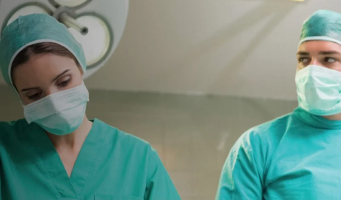Anaesthesia Fundamentals | Anatomy | Brachial Plexus, Nerve Supply to the Arm and Hand



Brachial Plexus, Nerve Supply to the Arm and Hand
Session overview
Description
This session will describe the anatomy of the brachial plexus and how it is related to other structures within the neck and upper arm. It will also describe the anatomy of the major nerves formed by the brachial plexus, and the sensory dermatomes and muscle groups supplied by these nerves.
Learning objectives
By the end of this session you will be able to:
- Describe the anatomy of the brachial plexus
- Describe how the brachial plexus is related to other structures in the neck and axilla
- Describe the main branches of the brachial plexus
- Outline the nerves supplying muscles in the arm and forearm
- Outline the nerves supplying sensation in the arm and forearm
Prerequisites
Before commencing this session you should complete the following:
- Brachial plexus, nerve supply to the arm and hand (001-0580)
A standard spinal nerve supplies a strip of skin (dermatome) and a strip of muscle (myotome).
At the top and bottom of the spinal column, a collection of spinal nerves connect and divide to form a plexus of nerves (plexus is Latin for braid). The brachial plexus is the most complicated of these.
It is formed from the anterior primary rami of spinal nerves C5 to T1 (and on occasion C4 or T2), and is responsible for providing the motor, sensory and sympathetic supply to virtually the whole arm.
This session will cover the anatomy of the brachial plexus and how it relates to other structures in the neck and axilla, and the nerves supplying the muscles and sensations in the arm and forearm.
- Acute Medicine | Chest pain 01 knowledge A
- Posted By eIntegrity Healthcare e-Learning
- Posted Date: 2025-01-26
- Location:Online
- This session provides an overview of ischaemic electrocardiograms (ECGs) in acute medicine. It is not intended to teach how to interpret ECGs, but to understand the underlying coronary anatomy relative to their interpretation.
- Acute Medicine | Cardiorespiratory arrest 02 knowl...
- Posted By eIntegrity Healthcare e-Learning
- Posted Date: 2025-01-26
- Location:Online
- This session explains the pathophysiology and aetiology of hypothermia in adult patients and the way they present.
- Acute Medicine | Breathlessness 18 knowledge B
- Posted By eIntegrity Healthcare e-Learning
- Posted Date: 2025-01-26
- Location:Online
- This session describes how to evaluate, investigate and plan the management of a patient presenting with breathlessness due to anaemia.
- Acute Medicine | Breathlessness 18 knowledge A
- Posted By eIntegrity Healthcare e-Learning
- Posted Date: 2025-01-26
- Location:Online
- This session will look at the classification of anaemia based on red cell indices and the associated factors leading to breathlessness in an anaemic patient.
- Acute Medicine | Breathlessness 13 knowledge A
- Posted By eIntegrity Healthcare e-Learning
- Posted Date: 2025-01-26
- Location:Online
- This session reviews the diagnosis and treatment approaches for patients with breathing pattern disorders.


